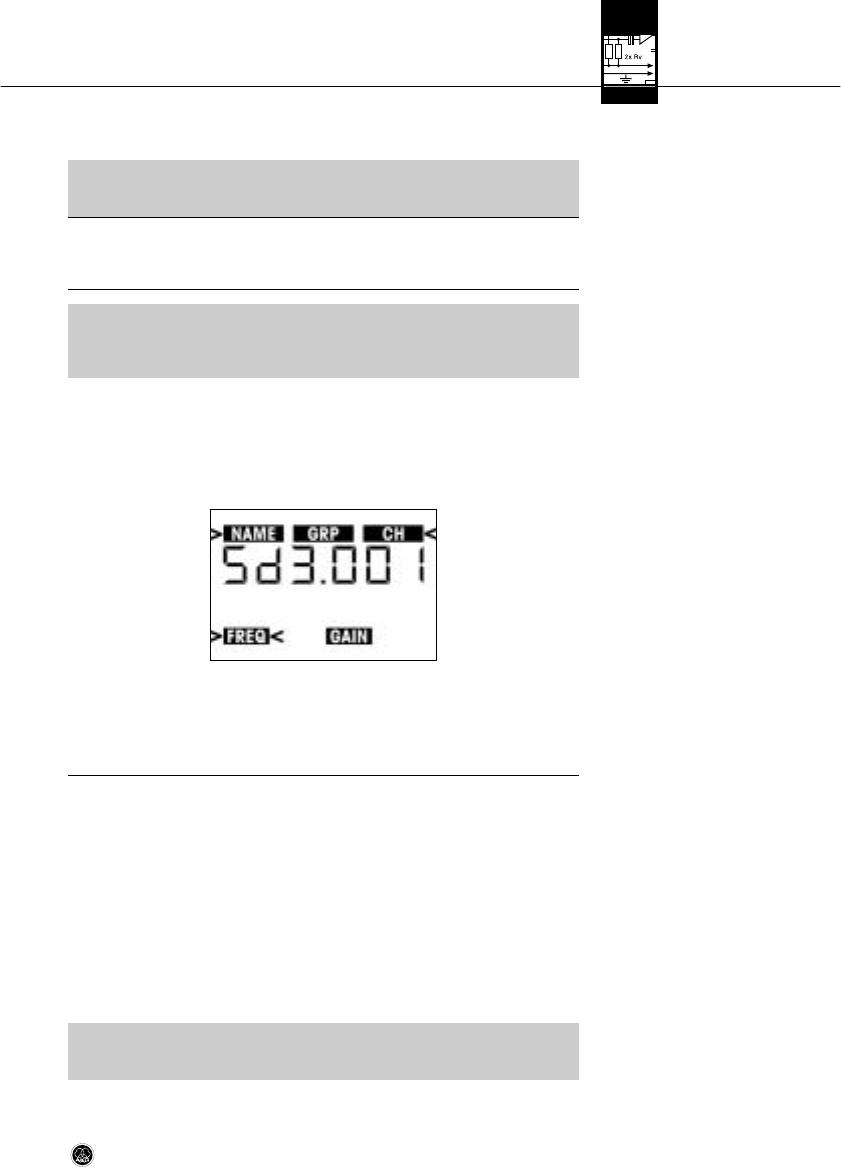
3 Setting Up
Note:
3.5 Powering Down
(all modes)
Refer to fig. 1.
3.6 Setting the Carrier
Frequency
Important!
3.6.1 Preset Menu
Note:
The "LOCK" label indicates that all controls except for the MUTE switch are electroni-
cally locked to prevent misadjustment.
• If the microphone is muted, the "MUTE" label appears on the display and the status LED
is lit red. If the microphone is active, "MUTE" will not appear and the status LED will be
lit green.
• Push and hold the ON/OFF button (3) until the message "oFF" appears on the display
(2).
The display goes dark and power to the transmitter is OFF.
• If you are not sure what carrier frequency the transmitter is tuned to, place the
transmitter into SILENT mode following steps 1 and 2 below. In SILENT mode,
you can check and adjust the carrier frequency and input gain without transmit-
ting a radio signal.
1. If the transmitter is ON, switch it OFF.
2. Push and hold the setup switch until the display backlighting comes on.
The display will first show the battery capacityin hours and as a bargraph and then the
currently selected carrier frequency in MHz.
As the backlighting goes out, the display changes as follows:
The transmitter is now in SILENT mode and the display shows the Preset menu.
3. You can either select one of the Preset Channels from the Preset menu (section 3.6.1)
or set the carrier frequency in 25-kHz increments in the Frequency menu (section 3.6.2).
The spacing between Preset frequencies prevents any mutual interference.
A Preset comprises one or more Groups of carrier frequencies. Group numbers are shown
under the "GRP" label. Carrier frequencies are also called "Channels" whose numbers are
indicated below the "CH" label. The spacing between these frequencies is wide enough to
prevent any mutual interference (intermodulation). Presets make it much easier to design a
multichannel system. They save time because you do not need to calculate your own car-
rier frequencies and help you avoid intermodulation problems.
Each Preset has a one or two-character "NAME" relating to the country where the respec-
tive carrier frequencies are allocated (e.g., "SD" for countries with no regulations, "US" for
the USA, or "UK" for Britain, etc.). The Preset names are sorted alphabetically.
When designing a multichannel system, make sure to use Channels within the same Group
only. Using Channels of different Presets and/or Groups simultaneously may cause inter-
modulation.
• Some Presets may be approved in more than one country. To check which Frequency
Group(s) is (are) approved in your country, visit www.akgfrequency.at or contact your
local regulation authority.
27
PT 4500
▲
!


















